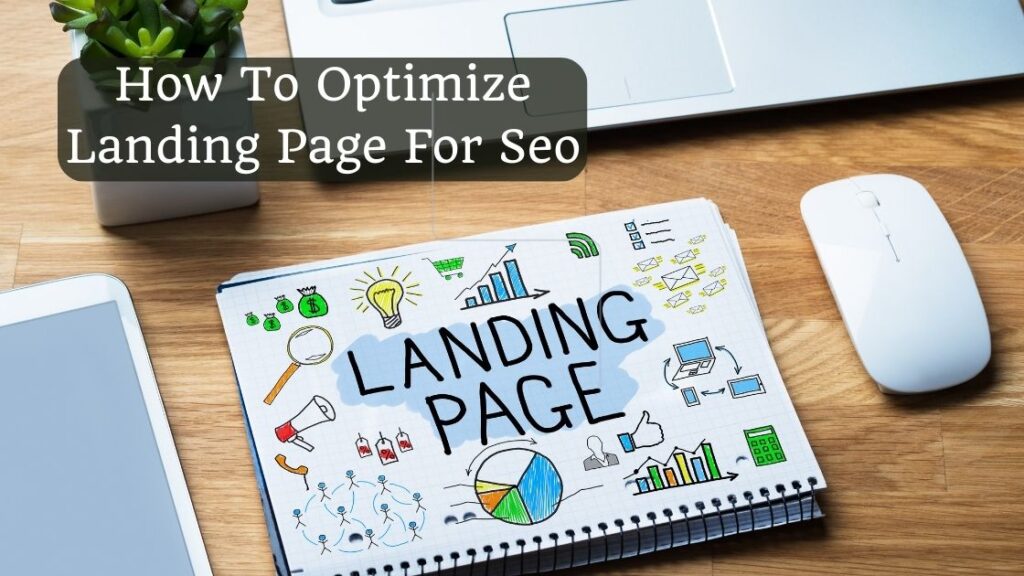How To Optimize Landing Pages for SEO
Introduction
In the digital age, creating high-converting landing pages is vital for generating leads and boosting sales. However, to truly unlock their potential, it’s essential to implement robust SEO strategies. Welcome to “The Ultimate Guide to Optimizing Landing Pages for SEO,” your comprehensive resource for mastering SEO landing page optimization.
This guide delves into essential landing page SEO best practices and how to create SEO-friendly landing pages. We’ll cover the critical aspect of selecting the right keywords for your landing pages and share effective SEO strategies specifically tailored for them.
You’ll discover tips for enhancing on-page SEO for landing pages, optimizing landing page meta tags, and understanding the overall SEO impact on landing pages. Furthermore, we’ll provide insights into optimizing landing page content to make your pages not only user-friendly but also search engine-friendly. By the end of this guide, you’ll be equipped with the strategies and knowledge needed to improve your landing pages’ visibility and performance in search results.
Why Optimizing Landing Pages for SEO Matters
Landing pages are designed to convert visitors into leads or customers, but without proper SEO, they may never reach their target audience. SEO ensures that your landing pages appear in relevant search results, driving organic traffic and enhancing your marketing efforts. By optimizing your landing pages for search engines, you can increase visibility, attract more qualified leads, and ultimately improve your conversion rates.

How To Optimize Landing Page For Seo – Best Practices Unlocked
Implementing SEO best practices is crucial for maximizing the effectiveness of your landing pages. Here are some key strategies:
- Conduct Thorough Keyword Research: Identifying the right keywords for landing pages is the foundation of effective SEO. Use tools like Google Keyword Planner, SEMrush, or Ahrefs to find relevant keywords with high search volume and low competition.
- Optimize Your Page Titles and Meta Descriptions: Craft compelling and keyword-rich titles and meta descriptions. These elements appear in search results and play a crucial role in enticing users to click on your link.
- Create High-Quality Content: Content is king, even on landing pages. Ensure your content is informative, engaging, and optimized with relevant keywords. Avoid keyword stuffing and focus on providing value to your audience.
- Ensure Mobile-Friendliness: With a significant portion of web traffic coming from mobile devices, it’s essential that your landing pages are responsive and provide a seamless experience across all devices.
- Improve Page Load Speed: Fast-loading pages are favored by both users and search engines. Optimize images, leverage browser caching, and minimize code to enhance your page speed.
Read More How To Optimize Website Content For Voice Search in 2024
How to Optimize On-Page Elements for SEO
On-page SEO involves optimizing individual elements on your landing pages to improve their search engine ranking. Here’s how to do it effectively:
- Optimize Headers (H1, H2, H3): Use headers to structure your content and include primary keywords. This not only helps with SEO but also improves readability.
- Include Internal and External Links: Internal links help search engines understand the structure of your website and can boost the SEO of your landing pages. External links to high-authority sites can also enhance credibility and SEO.
- Use Alt Text for Images: Ensure all images have descriptive alt text that includes relevant keywords. This helps with image search optimization and improves accessibility.
- Implement Schema Markup: Schema markup provides search engines with additional context about your content, which can enhance your search engine listing with rich snippets.
The Role of Keywords in Landing Page SEO
Keywords are the cornerstone of SEO. They connect your content with what users are searching for. To effectively use keywords:
- Focus on Long-Tail Keywords: Long-tail keywords are more specific and often less competitive, making it easier to rank for them. They also tend to attract more qualified traffic.
- Incorporate Keywords Naturally: Avoid keyword stuffing. Instead, integrate keywords seamlessly into your content, headers, and meta tags.
- Use Latent Semantic Indexing (LSI) Keywords: These are related terms that help search engines understand the context of your content. Include LSI keywords to enhance relevancy and improve SEO.
Optimizing Landing Page Meta Tags for SEO
Meta tags, including title tags and meta descriptions, play a significant role in SEO. Here’s how to optimize them:
- Craft Compelling Title Tags: Your title tag should be unique, include primary keywords, and be under 60 characters to ensure it displays properly in search results.
- Write Persuasive Meta Descriptions: While meta descriptions don’t directly impact rankings, they influence click-through rates. Make them engaging and informative, with a clear call to action.
- Use Relevant Keywords: Incorporate primary and secondary keywords naturally in both title tags and meta descriptions to improve visibility.
Measuring and Analyzing SEO Performance
Tracking the performance of your SEO efforts is crucial for continuous improvement. Here are some metrics to monitor:
- Organic Traffic: Measure the number of visitors coming to your landing pages from search engines. An increase indicates successful SEO strategies.
- Bounce Rate: A high bounce rate may suggest that your landing page content is not meeting visitor expectations. Optimize content to retain visitors.
- Conversion Rate: Track how many visitors complete the desired action on your landing page. This is a key indicator of the effectiveness of both your SEO and overall landing page design.
- Keyword Rankings: Monitor the rankings of your targeted keywords to see how well your landing pages are performing in search results.
Conclusion
Optimizing landing pages for SEO is a powerful way to boost your online presence and drive more qualified traffic to your site. By following the best practices and strategies outlined in this guide, you can enhance your landing pages’ visibility, improve user experience, and ultimately achieve higher conversion rates. Start implementing these techniques today to see a significant impact on your landing page performance and overall SEO success.







